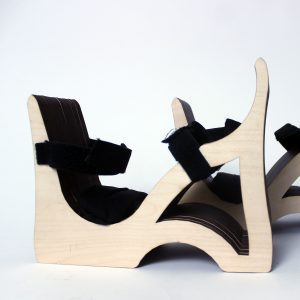
We are pleased to announce YEE-O 2020 – Year End Exhibition – Online edition for this 2019-2020 academic year. This annual event celebrates the hard work and creative achievements of over 500 undergraduate and graduate students from every unit and level in the Faculty of Architecture at the University of Manitoba. Unfortunately, COVID-19 led to the cancellation of this in-person event, but sharing and celebrating student achievements must go on!
P1 BODY | MOTION
Instructors: Mohamad Araji, Jae Sung Chon, Ryan Coates, Katherine Isaac, Alyssa Schwann, Kim Wiese
Space seized by imagination cannot remain indifferent space to the measuring and thought of the surveyor. It is to be experienced. And it is to be experienced, not in its positiveness, but with all the bias of imagination.1
In which we show that we have an insider’s view of the body, one shaped by our actions and sensations, unlike our outsider view of other things in our world that is shaped by appearances. Mirror neurons map others’ bodies onto our own, allowing us to understand other bodies through our own and to coordinate our actions with theirs.2
Inquiry: How much do we know about our body, its spatial presence and potentials? When do we sense the presence of our body, how? Is body a space, a surface or a form? What are the spatial and formal qualities (and potentialities) of our body? What are the spatial and formal qualities of our body? How do our bodies move in space? Can we reveal and/or augment its spatial reality in motion? How can we reveal different, possibly hidden, attributes of our body? How much of our sense of space is affected by the modes of our body? How do the attributes of our body (weight, smell, texture, movement/speed, heat, and so on) register in the space (construction of space)? How does our sense of space change as our body engages different ‘extensions’ (furniture, clothing, gadgets, utensils, and so on)? Can we question (change) the space by questioning (changing) the body? Can we invent new spatiality by augmenting the body-space relationship? Can we question our existing metaphor of ‘body as subject’ and forward a new one: ‘body as an object’ (moment, machine, city, landscape, and so on)?
Heel Plantar
Hakeem Amoo & Jennifer Laird
The project explored walking and how the body functions in walking. The focus was on the feet as it was the primary part of the body involved in walking. The different stages and muscles involved in walking were explored to determine both what we could affect and how we could affect the gait. The project outcome focused on the feet and our ability to adapt our gait by inclining the feet while keeping the heel engaged.
Skinflexion
Kaylee Peters & Brady Ricketts
The project explored walking and how the body functions in walking. The focus was on the feet as it was the primary part of the body involved in walking. The different stages and muscles involved in walking were explored to determine both what we could affect and how we could affect the gait. The project outcome focused on the feet and our ability to adapt our gait by inclining the feet while keeping the heel engaged.
1 Gaston Bachelard, The Poetics of Space. Trans. Maria Jolas. (Boston, Mass: Beacon Press, 1994), xxxvi.
2 Barbara Tversky, Mind in Motion: How Action Shapes Thought. (New York: Basic Books, 2019). 9.


